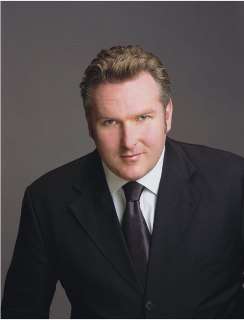|
Back
The Blood of the Wälsungs New York
David Geffen Hall, Lincoln Center
02/14/2018 - & February 15, 17*, 2018
John Luther Adams: Dark Waves
Richard Wagner: Die Walküre, Act I
Heidi Melton (Sieglinde), Simon O’Neill (Siegmund), John Relyea (Hunding)
New York Philharmonic, Jaap van Zweden (conductor)

S. O’Neill (© Lisa Kohler)
“...joy of vengeance gladdens our hearts now!
So laugh I in highest delight,
Holding thee, noblest and dearest,
Feeling the beat of thy heart.”
Richard Wagner, Die Walküre, Act I
Do we sense a trend? When Maazel was here, the Philharmonic presented “The Ring Without Words”. Last season Alan Gilbert ended his final regularly scheduled season with a concert performance of Das Rheingold (there were some other further explorations of his own personal musical choices as a tribute) and now music director designate Jaap van Zweden has ventured forth with Act I of Die Walküre in the interregnum year. Is this the midpoint of “The Ring Without Sets”? Will we hear from Siegfried soon? If so, I hope for the orchestral introduction to Act II, for me, Wagner’s greatest instrumental accomplishment.
Although the program booklet states that Simon O’Neill sang Siegmund in Götterdämmerung (the Wälsung warrior had gone to his reward in Valhalla long before), the bona fides of the three person cast were excellent. Add to this the enthusiasm of a new conductor attempting to make his mark and you had the potential for a very fine night next door to the opera. Music director designate Jaap van Zweden did not disappoint.
The first indication that some amount of thought had gone into this concert version was that the orchestra was positioned in an entirely new manner. Only the violins were stage right, while the violas, celli and basses were all on the other side. It was strange to see principal violist Cynthia Phelps near the middle of that stage surrounded by at least one hundred other musicians. There were also six harps. When the ensemble started to play their orchestral opening depicting Siegmund running, it was necessary to mull over whether or not to compare them to the orchestra of the Metropolitan Opera just next door. It was, of course, a legitimate measure and they acquitted themselves admirably.
Maestro created a very dark atmosphere as the vocal characters stood up to sing. Heidi Melton was a strong Seglinde, reminding in her fluidity of Wagner’s feelings for the model for this role, poet Mathilde Wesendonck. Ms. Melton exhibited quite a bit of vocal strength and stamina and tastefully added just a bit of acting into the tableau. It was during the vocalization that the genius of the orchestral balancing came through. This performance (the third in three nights!) was affecting emotionally as well as impressive vocally.
But the real find of the night was the Siegmund of Mr. O’Neill. A kiwi who studied up the road at the Manhattan School of Music, he was overwhelmingly strong and, considering that he was intoning this part for the third time in as many nights – Siegmund should get at least three evenings off according to the story – he was magnificent. He did not seem to need pauses and so he and Maestro van Zweden were able to keep the vocal lines both flowing and intact. Mr. O’Neill has sung virtually all of the big Wagner tenor roles and would make a superb Aeneas in the Berlioz Troyens (the French composer was the only one to get a glimpse of the autograph score of Walküre prior to its being disseminated). John Relyea was a fine Hunding, possessing a strong and threatening bass.
This particular evening was broadcast internationally and so there were dozens of hanging microphones there to capture the magic. A good thing, as this was a tantalizing listen to our maestro in waiting...
Also on the docket was John Luther Adams’s Dark Waves which, considering what else was on the program, can best be described as inconsequential.
Fred Kirshnit
|